This article needs additional citations for verification. (September 2013) |
The Dutch Republic Lion (also known as States Lion) was the badge of the Union of Utrecht, the Republic of the Seven United Netherlands, and a precursor of the current coat of arms of the Kingdom the Netherlands.
Background
[edit]When the county of Flanders was inherited by the Dukes of Burgundy in 1405, the Flemish lion (black on gold) was placed on an escutcheon in their dynastic arms (see Armorial of the French Royal House or Armorial of Dukes of Burgundy). The same happened with the duchy of Brabant (and its dependent duchy of Limburg ) in 1430 (gold lion on black for Brabant, red lion on white for Limburg), but oddly not the county of Holland (red lion on gold ) in 1432 or the duchy of Luxembourg (red lion on blue and white bars). These passed with the rest of the Burgundian inheritance to the House of Habsburg in 1482. Their descendants, the Kings of Spain bear the title of the county of Flanders (Holland was renounced in 1648 with the Treaty of Westphalia) and the duchy of Brabant to this day, and the arms were continually used until the abolition of the King Alfonso XIII in 1931 (see Coat of arms of the King of Spain and List of titles and honours of the Spanish Crown).
-
Arms of the Duke of Burgundy (1404-1430)
-
Arms of the Duke of Burgundy since 1430
-
Royal arms of Habsburg Spain
-
Royal arms of Bourbon Spain until 1931
The lion, as representing the Burgundian Netherlands, first appears as a crest on the tomb of Philip the Handsome. Later Charles V added the sword. The arrows were used, on coins etc., since the early 16th century to represent the Seventeen Provinces in the low countries under control of Charles V.
In 1578, during the Eighty Years' War, the States General ordered a new great seal representing the lion, the sword and the 17 arrows combined. Although only seven provinces remained free from Spain, this seal stayed in use until 1795.
New States Lion
[edit]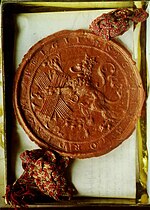
After the completion of its forming in 1584 the Republic of the Seven United Provinces used as its arms: Or a crowned lion Gules armed and langued Azure, holding in his dexter paw a sword and in the sinister paw seven arrows tight together Azure. The colours of this version where derived from the most important of the seven provinces, the county of Holland (its arms are still in use since being adopted by the counts of Holland c. 1198).
The sovereignty of the federal union was emphasized by the title of the States General "their Noble Mightinesses, the Lords States-General of the United Provinces of the Netherlands" or, in Dutch, "Den Heeren Hoog-Mogenden, Den Heeren Staten-Generaal der Verenigde Provinciën der Nederlanden").[1] and by a crown on the lion in their arms.
-
Coat of arms of the republic of the united Netherlands (c. 1665). Sternpiece of the Zeven Provincien.
-
Coat of arms of the republic of the united Netherlands (after 1665). Fireplace of the Kruithuis (Delft).
-
Arms of the "Republic of the Seven United Provinces" (the Netherlands between 1665 - 1795). Relief in Dordrecht
-
Arms of the Dutch Republic.
The number of arrows changed over time. At first there were 17, despite the fact that the Union of Utrecht counted 11 districts after the Fall of Antwerp in 1585. It was hoped by William the Silent that all the Seventeen Provinces of the Netherlands would eventually be united. However, this was not to be, and so it was eventually changed to 11, and with the Reduction of Groningen to 7. The number of arrows on the arms fixed at 7 in 1606, but the seal still remained with 17 arrows until 1795.
Duke of Anjou
[edit]
At the time of the Dutch declaration of independence the territory under nominal States-General control was steadily shrinking. Parma made steady progress. Orange had already been convinced that the only way to avert total defeat was to regain support of the moderates, alienated by Calvinist radicalism; reassure the still-loyal Catholics in the South; and retain the trust of the German Lutheran princes and the king of France. To attain these objectives he now persuaded the States-General to offer sovereignty over the Netherlands to the younger brother of Henry III of France, François, Duke of Anjou, who in 1578 had already intervened on behalf of the States-General. The latter arrived in Antwerp in January 1581, where he took an oath to in effect govern as a "constitutional monarch", and was acclaimed by the States-General as Protector of the Netherlands.
Unfortunately, Orange's attempt to paper over the disunity within the States-General by bringing in Anjou did not succeed. Holland and Zeeland acknowledged him perfunctorily, but mainly ignored him, and of the other members of the Union of Utrecht Overijssel, Gelderland and Utrecht never even recognised him.[2]
At the time of his sovereignty, Anjou replaced the Generality Lion by arms that he himself designed incorporating all the arms of the, at that time, nine Dutch rebellious provinces with France.
Anjou himself was dissatisfied with his limited power, and decided to take the Flemish cities of Antwerp, Bruges, Dunkirk, and Ostend by force. He decided personally to lead the attack on Antwerp on 18 January 1583. In an attempt to fool the citizens of Antwerp, Anjou asked to be permitted to make a "Joyous Entry" into the city in order to honour them with a parade. [citation needed] As soon as his troopers entered, the gates of Antwerp were slammed shut behind them and the citizen militia attacked them. Anjou barely escaped with his life and nearly his entire army perished, an affair known as the French Fury.[3]
After that the States-General re-established the previous arms.
Batavian Republic
[edit]The Batavian Republic founded in 1795 used in its first year the arms of the Dutch Republic, i.e. the Dutch lion or lion with crown, sheaf of arrows and swords. But on May 4, 1796, the Dutch Lion badge was replaced by a free drawing of the Netherlands Maiden around an altar with an anchor, and the States Lion with her.
The substitution in 1801 of the Batavian Republic by the Batavian Commonwealth, whose main feature was a stronger Grand Pensionary acting the part locally of the First Counsul Bonaparte also had its impact on heraldry. On April 12, 1802, it was decided that the new badge of the Commonwealth would be a golden lion on a red field again. The number of arrows that bears the lion in the leg was not established. This remained in use until the Kingdom of Holland was formed in 1806 for Napoleon's brother, installed as King Louis I of Holland.
-
Seal of the Batavian Republic, 1796–1802
-
Seal of the Batavian Commonwealth, 1802–1806
-
Seal of the Batavian Republic Navy
Kingdom of Holland
[edit]Napoleon's brother Louis Bonaparte was installed as King of Holland on 5 June 1806. Originally the arms of the new kingdom were to be like those of the Kingdom of Italy: an eagle bearing a shield, with the arms of the United Netherlands, the lion, now royally crowned. In December 1806, A. Renodi in Paris designed arms quartering the Napoleonic eagle with the lion of the United Netherlands. Around the shield was the French Order of the Grand Aigle. Behind the shield are crossed sceptres, typical for Napoleonic heraldry, and above the shield, Napoleon's star.
A few months later, on 20 May 1807, King Louis (now called "Lodewijk") altered these arms, adding a helmet, leaving out his brother’s star and replacing the Grand Aigle with his own Dutch Order of the Union and the old Dutch devise Eendracht maakt macht ("Unity makes strength") around the shield. Exemplary for the innovation in Napoleon's heraldry are the two hands coming out of clouds from behind the shield holding swords, designating King Louis as Connétable de France.
-
Coat of arms of Holland (1806).
-
Coat of arms of Holland (1808).
Kingdom of the Netherlands
[edit]When William VI of Orange returned to the Netherlands in 1813 and was proclaimed Sovereign Prince of the Netherlands, he quartered the former Arms of the Dutch Republic (1st and 4th quarter) with the "Châlon-Orange" arms (2nd and 3rd quarter), which had come to symbolize Orange. As an in escutcheon he placed his ancestral arms of Nassau. (See House of Orange-Nassau) When he became King in 1815, he combined the Dutch Republic Lion with the billets of the Nassau arms and added a royal crown to form the Coat of arms of the Netherlands. In 1907, Queen Wilhelmina replaced the royal crown on the lion and the shield bearers of the arms with a coronet and had the phallus of the lion removed.[4]
-
Arms of the States-General of the Dutch Republic. The sword symbolizes the determination to defend the nation, and the bundle of 7 arrows the unity of the 7 United Provinces of the Dutch Republic.
-
Arms of the House of Nassau, of which the Princes of Orange were a cadet (the Ottonian) branch.
-
Arms of William VI as sovereign prince of the Netherlands.[5]
-
First arms of the Kingdom and Kings of the Netherlands from 1815 to 1907.[6]
-
Arms of the Kingdom and Kings of the Netherlands since 1907.[6]
-
Coat of Arms of the Sovereign Principality and William VI of Orange 1813-1815.
-
Coat of Arms of the Netherlands and the Dutch Monarch 1815-1907.
-
Coat of Arms of the Netherlands and the Dutch Monarch after 1907.
References
[edit]- ^ Rowen, Herbert H. (1978). John de Witt, grand pensionary of Holland, 1625-1672. Princeton University Press. ISBN 9780691052472.
- ^ Israel (1995), p. 212
- ^ see Jean Heritière, Catherine di Medici, Allen and Unwin, p397
- ^ "Wapens van leden van het Koninklijk Huis". Coats of Arms of the Dutch Royal Family, Website of the Dutch Monarchy, the Hague. Rijksvoorlichtingsdienst (RVD), the Hague, the Netherlands. Archived from the original on June 7, 2012. Retrieved April 30, 2012.
Bij Koninklijk Besluit van 10 juli 1907 (Stb. 181) werd het Koninklijk Wapen, tevens Rijkswapen, aangepast. De leeuw in het schild en de schildhoudende leeuwen droegen vóór die tijd alle drie de Koninklijke kroon, maar raakten deze kwijt nu de toegevoegde purperen hermelijn gevoerde mantel, gedekt door een purperen baldakijn, een Koningskroon ging dragen. De schildhouders waren vóór 1907 bovendien aanziend in plaats van en profiel.
- ^ Rietstap, Johannes Baptist (2003). Armorial general. Vol. 2. Genealogical Publishing Co. p. 297. ISBN 0-8063-4811-9.
- ^ a b "The Official Website of the Dutch Royal House in English". Archived from the original on May 30, 2013. Retrieved 26 April 2011.
Sources
[edit]- Gelderen, M. van (2002), The Political Thought of the Dutch Revolt 1555–1590, Cambridge University Press, ISBN 0-521-89163-9.
- Glete, J. (2002),War and the State in Early Modern Europe. Spain, the Dutch Republic and Sweden as Fiscal-Military States, 1500–1660, Routledge, ISBN 0-415-22645-7.
- Israel, Jonathan (1989), Dutch Primacy in World Trade, 1585–1740, Clarendon Press, ISBN 0-19-821139-2.
- Israel, Jonathan (1990), Empires and Entrepôts: The Dutch, the Spanish Monarchy, and the Jews, 1585–1713, Continuum International Publishing Group, ISBN 1-85285-022-1.
- Israel, Jonathan (1995), The Dutch Republic: Its Rise, Greatness, and Fall 1477–1806, Clarendon Press, Oxford, ISBN 0-19-873072-1.
- Motley, John Lothrop (1855). The Rise of the Dutch Republic. Harper & Brothers.
- Rowen, Herbert H. (1978). John de Witt, grand pensionary of Holland, 1625–1672. Princeton University Press.
External links
[edit]| History of the Netherlands |
|---|
 |
|
|
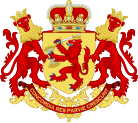

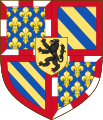

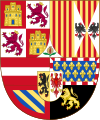
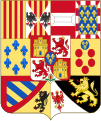






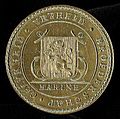



![Arms of William VI as sovereign prince of the Netherlands.[5]](http://upload.wikimedia.org/wikipedia/commons/thumb/d/dd/Arms_of_Sovereign_Prince_William_I_of_Orange.svg/98px-Arms_of_Sovereign_Prince_William_I_of_Orange.svg.png)
![First arms of the Kingdom and Kings of the Netherlands from 1815 to 1907.[6]](http://upload.wikimedia.org/wikipedia/commons/thumb/7/70/Royal_Arms_of_the_Netherlands_%281815-1907%29.svg/111px-Royal_Arms_of_the_Netherlands_%281815-1907%29.svg.png)
![Arms of the Kingdom and Kings of the Netherlands since 1907.[6]](http://upload.wikimedia.org/wikipedia/commons/thumb/5/5a/Royal_Arms_of_the_Netherlands.svg/111px-Royal_Arms_of_the_Netherlands.svg.png)



